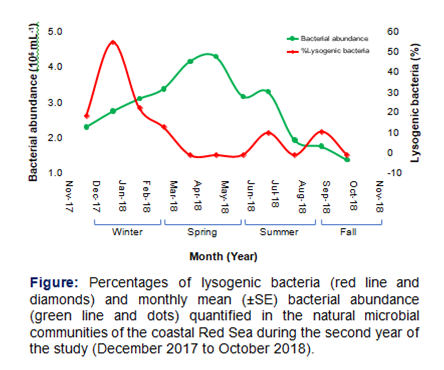Ruba Abdulrahman Ashy
King Abdullah University of Science and Technology, Saudi Arabia
Title: Lysogens in the natural microbial communities of the warm Red Sea
Biography
Biography: Ruba Abdulrahman Ashy
Abstract
Viruses are the most abundant microorganisms in marine environments. Viral infections can be either lytic (virulent) or lysogenic (temperate phage) within the host cell. The Red Sea is a narrow oligotrophic basin classified as the warmest water temperatures, which may affect the dynamics of microbial community. Studies on lysogenic bacteria in the Red Sea remain unexplored. The aim of this study was to quantify viral dynamics in the Red Sea and to investigate the occurrence of lysogenic bacteria based on a temporal study. Over two years, we quantified fortnightly environmental parameters and virus and bacterial abundances in a coastal station of the Red Sea. During the second year, monthly seawater samples were examined for prophage induction by mitomycin C. Water temperatures were high, from 25.4 to 31.93 °C and total viral and bacterial abundances ranged from 1.51 to 8.56 × 106 and from 1.94 to 3.16 x 105 cells mL-1, respectively. The burst size was calculated as 13.81. We determined that 12.24 % ±4.82 (SE) of the treated bacteria were lysogenized with the highest percentage of 55.8% observed in January 2018 when bacterial abundances were low. Second small proportions were identified in July and September, which potentially related to the stressful conditions to phages with no induction, was observed in the spring time where bacterial abundances were at the highest. Our results confirm that lysogenized cells were favoured when bacterial populations were low; however, there was no clear relationship between lysogeny and seasonal changes in the Red Sea environmental conditions, as the stressful summer did not induce high lysogeny neither lytic infection.


